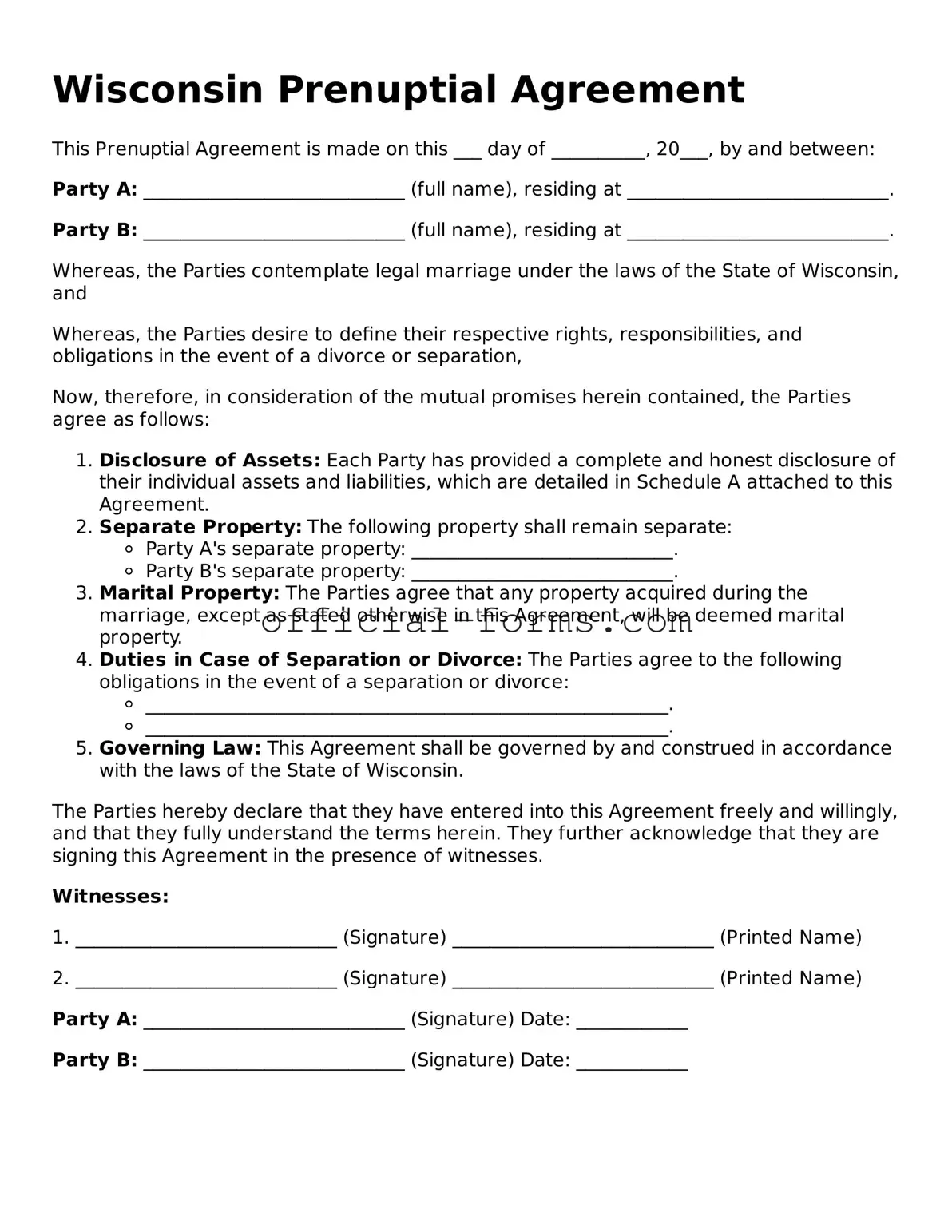In Wisconsin, a prenuptial agreement serves as a crucial tool for couples planning to marry, allowing them to outline their financial rights and responsibilities before tying the knot. This legal document can address a variety of important aspects, including the division of property, spousal support, and the management of debts acquired during the marriage. By clearly defining these terms, couples can reduce potential conflicts and misunderstandings in the event of a divorce or separation. The form itself requires careful consideration of each party's assets, liabilities, and income, ensuring that both individuals enter the marriage with a clear understanding of their financial landscape. It is essential to note that for a prenuptial agreement to be enforceable in Wisconsin, it must be executed voluntarily, with full disclosure of assets, and ideally, with the guidance of legal counsel. As couples navigate this process, they can foster open communication about financial expectations, ultimately strengthening their partnership as they embark on their journey together.
